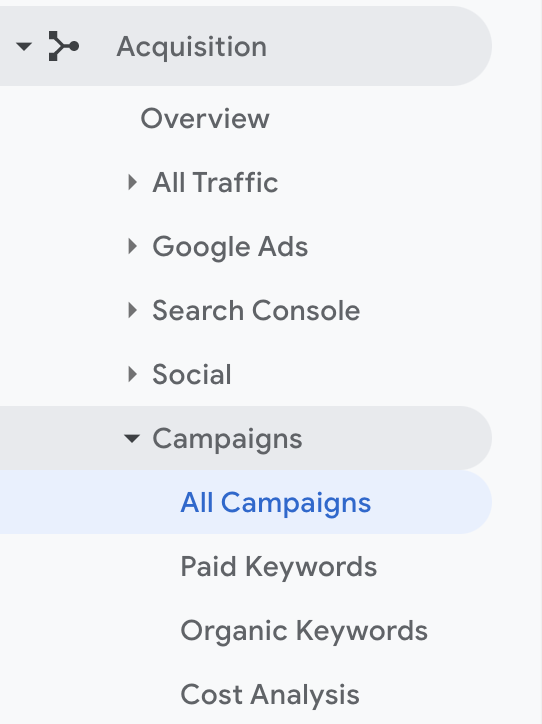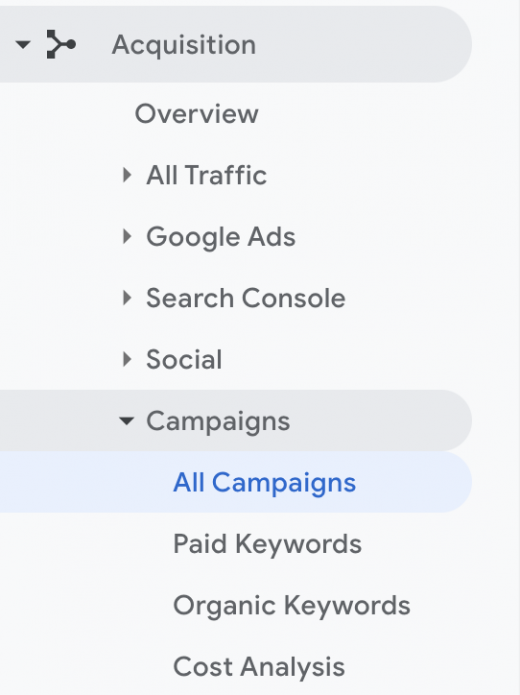Best Practices for Naming UTM Tags for Reporting
The more data you put in the hands of a marketer, the more informed and strategic their decisions become. Although most of us feel comfortable reporting and understanding referral sources for our campaigns, we’re often not able to go as deep as we like in understanding what exactly is driving traffic to our site.
That’s where urchin tracking module (UTM) tags become an essential tool in a marketer’s arsenal to ensure we’re able to report at a deeper level.
If you’re familiar with UTM tags but unsure how to get started or how to set your team up for success, this is the blog post for you. Below we outline:
- What UTM tags are and how they work
- Why they are important for marketers to use
- Which best practices to follow for creating a naming convention
- How to find UTM tag data in Google Analytics
What Are UTM Tags and How Are They Used?
UTM codes are “snippets of text added to the end of a URL to help you track where website traffic comes from if users click a link to this URL.” UTM tags help inform analytics tools like Google Analytics on how to categorize incoming traffic data.
Standard UTM parameters, or “tags,” include:
- Source: The social network, search engine, or specific source that drove the traffic to your site
- Medium: The channel that drove the traffic (e.g., organic, paid social, email, referral, and so on)
- Term: The paid keywords or key phrases that warrant the UTM tag
- Content: Often used in pay-per-click (PPC) campaigns to denote a page with two identical links on the same page (e.g., utm_content=sidebarlink or utm_content=headerlink)
- Campaign name: Specific types of content that point to the same destination from a common source and medium; each campaign should have a unique name
Whether you’ve used UTM tags or not, I can guarantee that you’ve visited a website with UTM tags to track your engagement and measure the success of their marketing campaign(s). Here’s an example of a URL without any tracking:
www.yoursite.com/pricing
Now here’s an example of the same URL using a combination of UTM tags:
www.yoursite.com/pricing?utm_source=google&utm_medium=email&utm_campaign=15percentoffpromo
By looking at the above URL with tracking provided, you can see that this is a promotional campaign being run via email that sends people to the pricing page.
How Do UTM Tags Help Marketers?
As marketers, we are routinely trying to develop the most effective marketing campaigns. We do this by operating with the most amount of data available to us to make the most informed decisions. As we gain additional data and insight, we’re able to better refine our efforts.
That’s the beauty of UTM tags!
Using a combination of UTM tags helps marketing teams better gauge and pinpoint exactly where traffic generated by marketing efforts and campaigns is coming from. Thus, we’re able to see what’s working and what may not be performing as expected and iterate from there as needed. UTM tags can also help dispel our own assumptions about which channels we think work best for us, and instead show us which channels actually are working best for us.
The Best Tools for Setting Up UTM Tags
OK, so not only do you understand what UTM tags are and how they can support your marketing efforts with UTM tag reporting moving forward, you’re ready to get started—awesome!
There’s just one thing: These URLs are long and daunting. How do you set them up to ensure they are sending the appropriate data back to Google Analytics for us to track?
Luckily, there are some great tools out there that help generate UTM tags for campaign URLs. These include:
These tools will help with manually tagging your UTM tags for your campaigns. There are also third-party tools that automatically tag URLs using UTM parameters including Mailchimp, Buffer and Hootsuite for paying customers.
3 Best Practices for Naming UTM Tags
With the potential for hundreds of UTM-tagged URLs, it’s critical that you are able to easily filter data when it comes to reporting. Thus, it’s imperative to develop a consistent naming convention that’s easy to remember and documented for your marketing team to ensure everyone is one the same page.
Here are three best practices to help you get started:
- Use consistent casing for better searchability when reporting.
- Use dashes to separate words for better readability and searchability.
- Use descriptive language to ensure it’s easy to track.
Here are some of these best practices in action:
- Campaign: Use a cross-channel description like “ebook-launch.”
- Medium: Always use something specific like “paid-social.”
- Source: Always use something like “facebook.”
Bonus: Plan for complexity, and plan for the future.
The above is a simple naming convention example, but there may be instances where you need a more complex naming convention. This is especially important for “campaign” UTM tags. You want to make sure that your naming convention is consistent but also makes it clear what the campaign is.
Use descriptive language so that it’s easy to track, especially if you run campaigns monthly or quarterly that you need to be able to filter on. These could include:
- Month and/or year: This can be useful for product launches and subsequent iterations/updates, quarterly roundtable webinars, and so on.
- Country: This is useful when there are different campaigns in different countries and we want to understand the performance in each region. We see this a lot for global marketing teams that need to provide reporting to regional managers.
- Target: This is helpful when a campaign launch has specific personas and we want to track the performance across each target audience.
Of course, your naming convention will be based on the needs of your organization. The key is to ensure that you’re not just building a naming convention for today, but that you’re also leaving room for the possibilities of the future. Thus, having an internal huddle and brainstorming the campaigns being run and future wish-list campaigns is important to set your team up for success.
UTM Tag Reporting in Google Analytics
Once you start using UTM tags across your marketing campaigns, you’ll need to ensure you know how and where to find all that precious data. Fortunately, it’s pretty easy to find in Google Analytics under Acquisition > Campaigns > All Campaigns.

Here’s a great blog article that outlines where to find UTM tracking data in Google Analytics, with helpful screenshots and further instruction.
Once you’ve set up the correct foundation with a consistent naming convention, specific to the needs of your team, you’re off to the races. Using a combination of UTM tags on your marketing campaigns provides the valuable insight and data needed to make better decisions, pause and/or pivot on underperforming campaigns, and ensure that you’re yielding more positive results.
Digital & Social Articles on Business 2 Community
(50)


